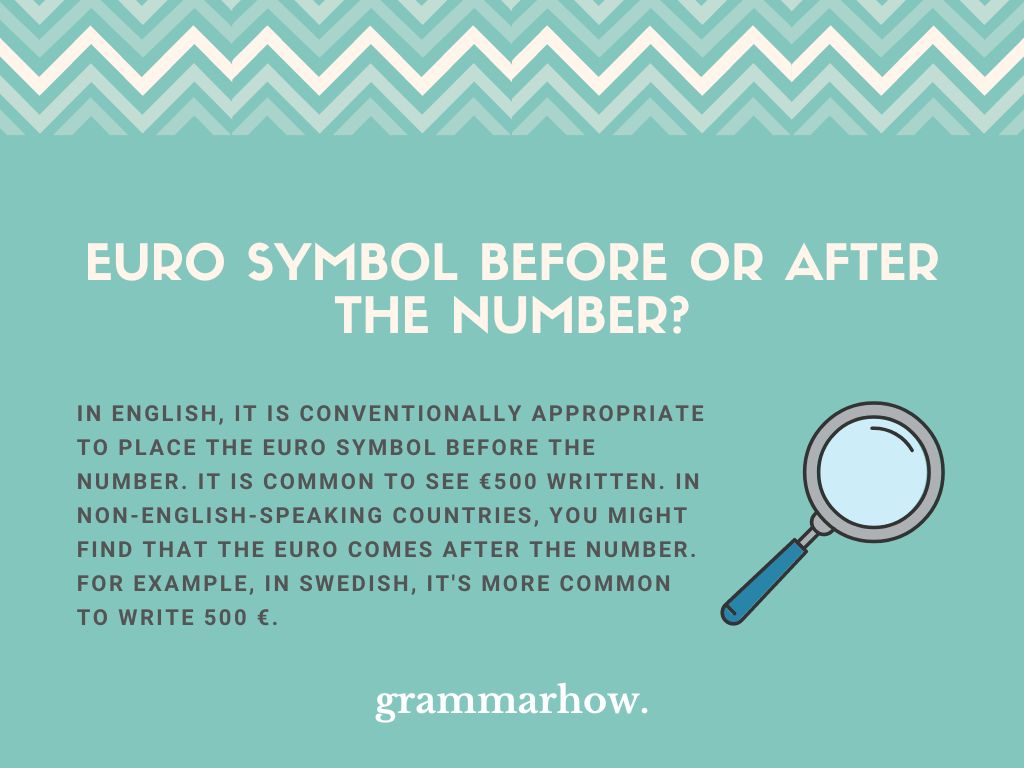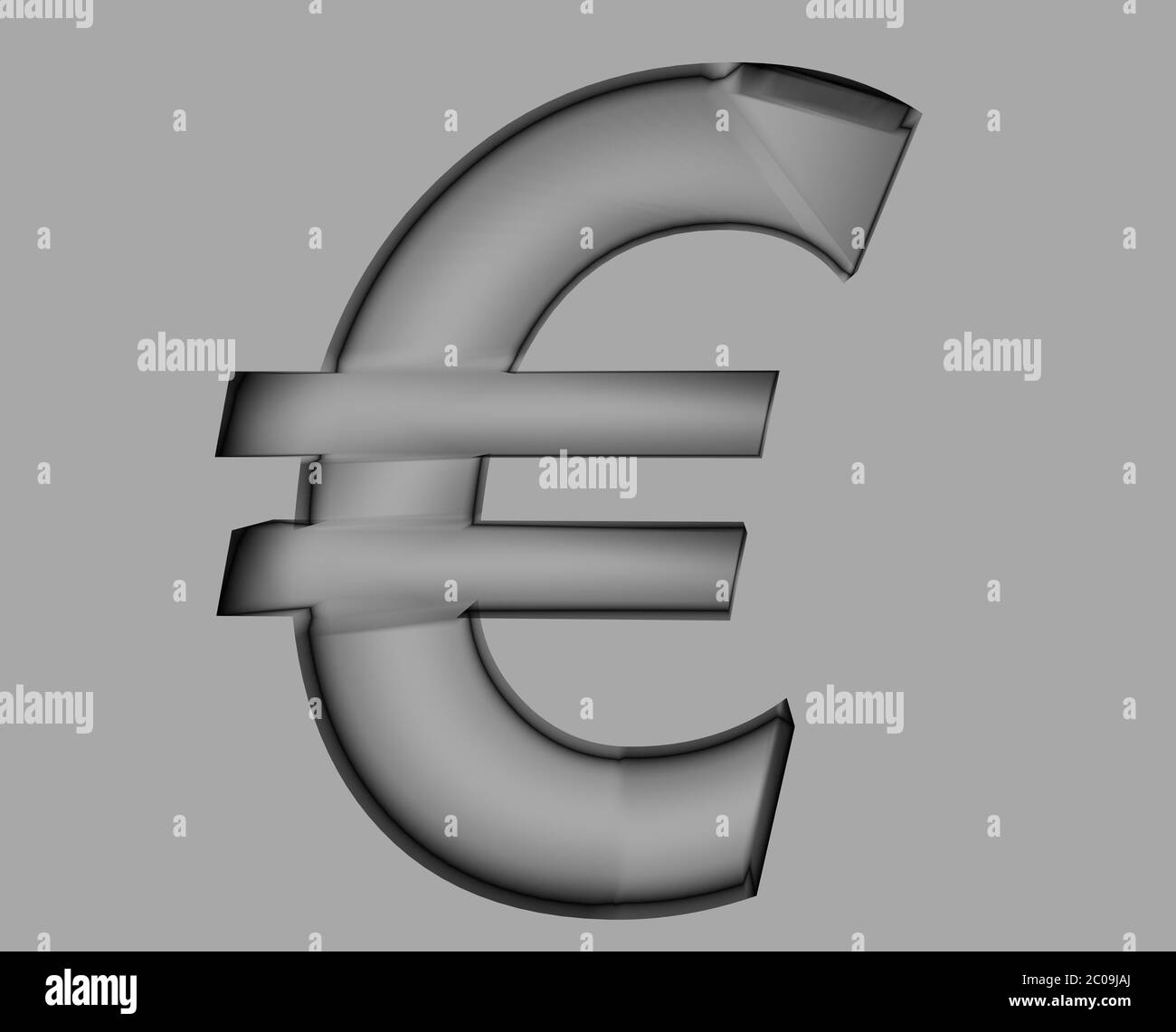Does the placement of a simple symbol hold the power to sow confusion across continents? When it comes to the euro sign (\u20ac), the answer is a resounding yes, and understanding its correct usage is essential for clear and effective communication across borders.
The journey of the euro sign, much like the euro itself, is a tale of international collaboration and evolving conventions. The design, presented to the public by the European Commission on December 12, 1996, is a stylized letter 'E' (or epsilon) crossed by two parallel lines. This seemingly simple symbol represents the official currency of 19 European Union countries and is widely recognized in global business. Its adoption, however, has not been without its quirks, particularly regarding its placement relative to the numerical amount it represents.
Consider the recent purchase of a large electronic sign, valued at 350,000 euros, a transaction that immediately brings to light the practical implications of this seemingly minor detail. Would it be written as "\u20ac350,000" or "350,000\u20ac"? The answer, as you'll soon discover, is not as straightforward as one might think.
- The Curious Age Gap Between Angelina Jolie And Billy Bob Thornton
- Zion Quari Barrino Rising Star In The Entertainment Industry
The question of where the euro symbol goes before or after the numerical value often hinges on regional traditions and language conventions. The rules are far from uniform and can even vary within the same country. For instance, in Ireland, where historical convention dictated placing the currency sign before the amount, the euro sign follows the same pattern (e.g., \u20ac3.50). This mirrors the practices observed with their former national currency. Conversely, countries like Germany, where the national currency sign traditionally followed the number, have largely adopted the same approach with the euro (e.g., 3,50 \u20ac).
In English, the placement of the currency symbol is relatively straightforward for the dollar sign ($), with it almost always preceding the amount (e.g., $20). However, the euro presents a different challenge due to the varied practices across the Eurozone and beyond. Style guides may offer guidance, and it's always prudent to adhere to those if available. If no such guide is provided, it becomes a matter of understanding common practices and the specific context in which you're writing.
Beyond the symbol itself, there's the matter of the three-letter ISO currency code, EUR. This code invariably precedes the number, along with a space, when used in English, Irish, Latvian, and Maltese texts (e.g., EUR 50). In all other European Union texts, the ISO code is presented after the numbers, again with an intervening space (e.g., 50 EUR).
- Meet Taylor Swifts Amazing Brothers Uncovering Their Unique Names And Stories
- Dakota Fannings Husband Her Married Life Unveiled
While the use of currency symbols is widespread in written English, particularly because they are easily recognizable, it is equally acceptable to utilize the euro sign (\u20ac) itself. It is a matter of stylistic preference. You can save your "eur five" when expressing an amount. A single euro is divided into 100 cents, ensuring that even the smallest transactions can be accurately represented.
The evolution of currency symbol placement is inextricably linked to the history of the currencies they represent. The United States, for instance, places the dollar sign to the left of the amount, a convention familiar to most Americans. However, this practice is not universal. Geographic location plays a significant role, and the European Union countries often place the euro symbol to the right. Canada offers an interesting case, employing both conventions.
So, how does one navigate this linguistic minefield? Learning the nuances of writing numbers with the euro sign across different European languages is key. Knowing when to use \u20ac or EUR, before or after the number, and examining examples can clarify this. The goal is to communicate accurately and consistently, regardless of the audience or the context.
It's worth remembering that the euro sign (\u20ac) is a widely recognized symbol in the global business world. It is commonly seen in financial documents and used for international transactions. Correct usage of this symbol ensures clear and consistent communication, facilitating transactions and fostering trust among parties from diverse cultural and linguistic backgrounds. When used in conjunction with clear and consistent language, the risk of misunderstanding is greatly reduced.
The currency symbol itself is a graphic symbol used to denote a currency unit, and is generally defined by a monetary authority. The symbol's placement varies, and can be positioned before, between, or after numeric amounts, further highlighting the complex nature of currency symbol usage. Examples such as \u20ac2.50, 2,50\u20ac, and 2 50 serve to exemplify this variance.
If you need to insert an unfamiliar currency symbol into a word document, the process is simplified with a few straightforward steps. First, click insert, and then choose symbol or advanced symbol on iOS. Then, select a common symbol or click on more symbols, choosing currency symbols from the drop-down box. These basic steps allow for accurate representation of all currency symbols.
There are a few essential rules to remember. While writing in English, the dollar sign ($) is generally placed before the amount, as has been mentioned. However, other countries, including the Canadian province of Quebec, place the currency symbol after the amount. As a result, the proper context must always be considered. For example, in euros, it's written as \u20ac23, but in American cents, the amount is 10.
As a general rule, all standard units in physics and chemistry come after the number. But the euro symbol isn't a scientific unit, so it does not fit this pattern. A good rule of thumb to remember is that if something is numerical, it comes after the number.
Does the euro symbol come before or after the amount? It depends on your location. In several European or Asian countries, the symbol usually comes after the number (e.g., 100\u20ac). If you are unsure, it's wise to adopt the common practice for that area.
In those countries where the previous convention was to place the currency sign before the figure, the euro sign is placed in the same position (e.g., \u20ac3.50). In those countries where the amount preceded the national currency sign, the euro sign is again placed in that relative position (e.g., 3,50 \u20ac).
In French and German, the order is reversed. English also uses the singular of terms such as million if they relate to a currency such as EUR 10 million. The key is to remain informed and adaptable, always considering your audience. It's about conveying a clear message, and in a world where finance and business constantly cross borders, the importance of correct euro symbol usage cannot be overstated.
The euro is not merely a currency; it is a symbol of unity and shared identity. Whether the symbol precedes or follows the number, the euro facilitates transactions, fuels economies, and brings nations together. It is a testament to the power of collaboration and the importance of clear communication in a globalized world. By understanding the nuances of the euro sign, we can all play a part in ensuring that its message is understood clearly and consistently, wherever it may be seen.
The ISO currency code provides an alternative way to represent the currency. The ISO code always goes before the number. For example, it should be GBP 50, not 50 GBP. Additionally, it is important to remember that if you use the currency code, you should not use the symbol as well. The euro sign is designed to be simple and easy to recognize. It is similar to using the dollar sign ($) or the pound sign (\u00a3) which many native speakers recognize. When it comes to writing euro amounts, placing the euro sign (\u20ac) correctly is key for good communication.



Detail Author:
- Name : Dr. Hallie Deckow
- Username : kautzer.ruthe
- Email : gail.kuhn@konopelski.com
- Birthdate : 2005-12-30
- Address : 46965 Brad Walks Apt. 446 East Alana, FL 77360-8553
- Phone : +1 (212) 913-7106
- Company : Huel Group
- Job : Real Estate Broker
- Bio : Cum blanditiis vel optio ex nihil aliquid. Impedit deleniti iste ducimus animi dolor.
Socials
twitter:
- url : https://twitter.com/reichertg
- username : reichertg
- bio : Cumque voluptatem sed quia veniam consequatur consequatur. Ea recusandae rerum nobis non commodi asperiores nobis.
- followers : 4529
- following : 1455
tiktok:
- url : https://tiktok.com/@reichert1986
- username : reichert1986
- bio : Dolorum error dicta possimus autem.
- followers : 1091
- following : 1419
instagram:
- url : https://instagram.com/gudrun742
- username : gudrun742
- bio : Et beatae ullam omnis. Animi quia est sunt ducimus adipisci quas.
- followers : 2768
- following : 1065
linkedin:
- url : https://linkedin.com/in/gudrunreichert
- username : gudrunreichert
- bio : Illum porro exercitationem deleniti.
- followers : 1583
- following : 240